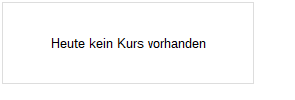
Sino Agro Food, Inc. Reports Audited FY 2017 Results
PR Newswire
GUANGZHOU, China, April 17, 2018
GUANGZHOU, China, April 17, 2018 /PRNewswire/ -- Sino Agro Food, Inc. (OTCQX: SIAF) (OSE: SIAF-ME), a specialized investment company focused on protein food including seafood and cattle announces results for the year ending December 31, 2017.
Revenue
Results reflect the carve-out of aquaculture operations announced March 2, 2017. Income from Sino Agro's interest in the carved-out company, Tri-Way Industries Ltd. is reported as "Income from unconsolidated equity investee." Revenue from the sale of goods from the former aquaculture business segment is no longer reported.
Revenue from the sale of goods decreased year over year ("YoY") by USD 89.6M, or 33%, to USD 181.2M for the year ended December 31, 2017 year over year ("YoY").
Revenue from consulting and project development decreased by USD 55.2M, or 76%, to USD 17.0M YoY. Prior to the acquisition of aquaculture farms by JFD/Tri-Way, construction and development costs were financed mainly by their respective owners and investors, and partially through the deferred accounts payable to Sino Agro's wholly owned subsidiary, Capital Award.
Beginning with the transfer of assets to JFD/Tri-Way, further infrastructure expansion and development became the sole responsibility of JFD/Tri-Way, and has been limited to available cash flow generated by internal operations. This accounts for the decrease in revenues from the aquaculture operations and Capital Award. Capital Award is the turnkey provider of consulting and project development services for JFD/Tri-Way, who is pursuing several avenues to fund development, including conventional financing of approximately USD 100M.
Overview
Adverse conditions impacting performance in the second quarter and third quarters continued in fourth quarter, resulting in a decline in gross profits on a YoY basis for FY 2017 from USD 83.9M to USD 19.6M.
Chief among these factors were continued pricing pressure in the beef and cattle businesses, and delays in the expected time to procure financing which could, among other things, rejuvenate business at Capital Award. It should be noted that based on recent discussions with lenders, Tri-Way remains confident in the approval of its applications for financing, but cannot pinpoint an exact time.
During the fourth quarter the Company took several actions to reprioritize its various business operations, focusing on its most prospective areas, while also addressing balance sheet items to support its carve-out and spinoff strategy:
- While Tri-Way pursues debt financing and to a lesser extent, SIAF also at the subsidiary level, at the corporate level, SIAF has taken steps to reduce obligations. Certain obligations provide security in the form of share equity which is to be returned to SIAF upon repayment, or are in the form of convertible notes.
- Trade facilities that provide working capital for the distribution business have been reduced from a total of USD 20M to USD 15M.
- Two additional loans have been paid down by USD 5.7M from USD 10.4M to 4.7M.
- A promissory note to Euro Capital China AB has been renegotiated.
- SJAP disposed of its QZH slaughtering and deboning operation, retaining a right, with certain provisions, to reinstate it, if favourable market and regulatory conditions return.
- SJAP also renegotiated agreements with cooperative farmers to eliminate further losses until market conditions improve and the cattle fattening operation returns to profitability.
All of these bullet points are explained in detail in the Company's recent 10-K filing under the heading of "Subsequent Events."
The Company has adapted to these segment specific conditions by restricting its capital expenditures, reducing general and administrative expenses, and tailoring product mix to products with reasonable, albeit lowered, gross margins.
Other Key Points
- As of December 31 2017, the Company had net working capital of USD 168.3M, with a quick ratio of 3.8 – 1, current assets to current liabilities. This comes after reductions in inventories and receivables resulting from operational consolidations, and from reclassifying certain liabilities from long-term to current.
- As of December 31 2017, the Company's stockholders' equity stood at USD 612.4M.
- FY 2017 income from SIAF's investment in Tri-Way was USD 12.0M, based on the full year ownership interest of 36.6% applied to Tri-Way's total 2017 net income of USD 32.8M. The 36.6% figure became effective October 5, 2017 after the one-year anniversary date of Tri-Way's consolidation, and SIAF's exercise of its option to convert Tri-Way's $41m in outstanding debt into an additional equity interest of 12.71%; equivalent to 12.71m common shares of Tri-Way, bringing SIAF's interest to 36.6% and 36.6m common shares.
- While pleased with the relative performance of Tri-Way, three growth avenues beyond those provided from reinvestment of available cash flow have been identified, if and when additional capital becomes available:
- Building out its farm facilities primarily at Aquafarms 4 and 5, which is mainly dependent on long-term financing. SIAF will continue to monitor the progress being made on Tri-Way's funding efforts and will report any progress to its shareholders as it materializes.
- SIAF's R & D branch has determined an economical way to raise salt water Mexican White Prawns. Tri-Way is proceeding with an experimental farm at Enping's Aquafarm1, with the intent of proving efficiently scalable production to be built and deployed if and when build out funds become available.
- Tri-Way is organizing a Trading Division based in Hong Kong ("HK") to import frozen seafood and other frozen food products to be sold in China by JFD's commercial arms (which are special vehicles, or companies being established since mid-2017). Each hold respective specific import/export permits and licenses. Tri-Way's imports will differentiate from SIAF's imports, which mainly consist of live seafood and slaughtered/dressed beef. Having the Trading Division established in HK would carry advantages, in addition to providing an anticipated quicker revenue stream. Estimates of performance from this division show considerable leveraged trade sales at a healthy profit margin.
- As a private company, Tri-Way has applied for a series of short-term conventional bank loans to provide the necessary seed-capital to assist the Trade Division business get underway.
- The Company believes that coupling trade sales with existing and growing wholesale fish sales will demonstrate sufficiently sizeable and growing performance history to create a healthy balance of economic fundamentals in the future.
- The Company's intention to distribute 18.3% ownership of Tri-Way Industries Ltd. to SIAF shareholders remains in effect and will be executed based on the considerations and optimal outcome of tax and regulatory issues. In addition, Tri-Way's advisors have requested that the change in ownership occur at a later date in consideration of qualifiers associated with the conventional lending process and until pre-IPO process.
- The Company is moving toward carving out its subsidiaries, with Tri-Way as a model. Depending on performance, these companies intend to pay a dividend to their shareholders, including those receiving shares distributed by SIAF to SIAF shareholders. Of course, as a direct shareholder, SIAF anticipates receiving dividends from these independent companies, as well.
- Using funds from investees, SIAF anticipates being able to pay an additional cash dividend at the SIAF corporation level to its shareholders sometime in 2018, with the intent of increasing its dividend payment as the investees develop and provide stronger dividends to the Company.
- More details regarding distribution of a possible cash dividend in 2018 will be made available in the Company's Q1 2018 report due in May, allowing the Board additional time to assess both the amount and timing of the dividend based on current activity, still underway.
Again, all of these bullet points are explained in detail in the Company's recent 10-K filing.
Financial Comparisons
The Company achieved the following results, comparing FY 2017 to FY 2016:
| (USD M, except per share and margin data) | FY '17 | FY '16 | % |
| Revenue | 198.2 | 342.9 | (42)% |
| Gross Profit | 19.6 | 83.9 | (77)% |
| Gross Profit Margin | 9.9% | 24.5% | (56)% |
| Earnings Per Diluted Share (FD) (USD) – from continuing and discontinued operations | (.53) | 1.93 | |
The following table breaks out revenue by business segment, comparing FY 2017 to FY 2016:
| Revenue (USD M) | FY '17 | FY '16 | % |
| Integrated Cattle Farm (SJAP) | 77.2 | 134.6 | (43)% |
| Organic Fertilizer (HSA) | 7.2 | 20.6 |
(66)% |
| Cattle Farms (MEIJI) | 20.4 | 29.8 | (31)% |
| Plantation (JHST) | 4.6 | 13.3 | (65)% |
| Seafood & Meat Trading | 71.8 | 72.4 | (1)% |
| Sale of Goods Total | 181.2 | 270.8 | (33%) |
| | | | |
| Project Development Total | 17.0 | 72.2 | (76)% |
| Group total | 198.2 | 342.9 | 1.5% |
Integrated Cattle (SJAP)
Gross profit for the Integrated Cattle segment in FY 2017 declined to USD .9Min FY 2016. Fertilizer, and bulk and concentrated livestock feed showed gross profits of USD .5M, USD 2.4M USD, and 5.3M respectively, and live cattle sales added USD .7M. However, the total SJAP gross profit of USD 8.95M was offset by a loss of USD 8.0 in the value added processing, QZH's slaughter and deboning operations.
The cattle market has endured depressed pricing for well over 12 months. The Company had already dramatically reduced the sale of live domestic cattle due to unprofitable conditions. Continuing increased competition in the fourth quarter had a materially negative impact on gross margins, filtering through to deboning and packaging, as competitive pricing for final product became increasingly challenged. As reported in November 2017, during the third quarter, gross margin for the deboning of imported beef deteriorated to the unsustainable level of 2.8%, which endured further deterioration to negative margin in the fourth quarter. In addition, the Central Government has instituted new environmental regulations that would require significant additional capital expenditure at SJAP.
For these reasons, SJAP management took two major actions.
- To eliminate any additional losses being incurred through QZH, SJAP decided to discontinue and dispose of QZH operations. If favourable market conditions were to reoccur, the Abattoir license were reinstituted, and Governmental assistance existed in developing a long-range plan, the option remains to consider resuming QZH operations in the future. Thus, as of December 30, 2017 (the "deemed date of disposal"), QZH's operations were discontinued and SIAF, based on its proportional ownership of QZH through its variable interest entity SJAP, had incurred a net loss on disposal totalling USD 9,365,543.
- SJAP's agreements with cooperative farmers had locked in pricing and credit terms. While the agreements worked very well for both parties through 2015 and manageably in 2016, the continued deterioration of wholesale beef prices has made SJAP's existing commitments to cooperative farmers untenable. With the local government, SJAP settled a release from its arrangements whereby:
- The cooperatives accepted a portion of the loss they had incurred in 2017 and the losses they have already incurred preparing for 2018, resulting from SJAP no longer being capable of making do on its commitment to purchase.
- SJAP agreed to pay the cooperatives a deeply discounted portion of its commitment/obligation to them at an average price of USD 800/head, about one-third of the out of pocket cost typically paid cooperatives in exchange for release from commitments to purchase. This creates a one-time cost of USD 17.75 million, as compared to the estimated cumulative total loss of USD 46.75 million in 2017/2018 based on SJAP's lock-in commitment price to buy. Therefore, the estimated amount of out of pocket loss to SJAP is reduced by about USD 30 million.
- In 2018, SJAP will continue operations for in house cattle rearing and fattening on a smaller scale, also reducing the scale and production of bulk livestock feed, concentrated livestock feed, and fertilizer. These segments should begin a natural growth rate of 5 - 10% while other related activities continue. Processing for value added activities at QZH have been discontinued.
Under this arrangement ongoing activities are expected to retain profitability albeit at lower levels than before the pricing pressures occurred, providing a stable business until market conditions return favorably and the local government's plan to develop Huangyuan District into a prominent cattle and beef trading center can materialize.
The rationale, terms, and impact of both actions are explained in great detail in the Company's 10-K filing, available here: http://sinoagrofood.investorroom.com/sec-filings
Organic Fertilizer (HSA)
Overall gross profit for HSA decreased by 73% to USD 2.2M. The overall decrease was mainly due to the YoY drop of 31,356 metric tons ("MT "), or 77%, in volume of mixed organic fertilizer sold to 9,042 metric tons ("MT"), as well as the a price decline of USD 7/MT.
The significant drop in sales volume was primarily due to a shutdown in production allowing construction work to be completed at the cattle workstation throughout the second half of 2018, and other reasons detailed in the 10-K.
It is now anticipated that HSA's annual target of 40,000 MT for organic mixed fertilizer will be reached somewhere in mid 2019.
Cattle Farms (MEIJI)
Improved cost efficiency led to a 145% increase in YoY gross profit to nearly USD 3.8M. Even though the number of head sold dropped by 39%, due an 11% increase in price per head, revenue declined significantly less, With a drop in unit costs, gross profits margins improved from 5% in FY 2016 to 18% n FY 2017.
Plantation (JHST)
As reported in previous quarters business at the HU plantation suffered from a poor quality of flowers due to root diseases caused by years of excessive rain. Nonetheless, the business managed a gross profit of USD 1.3M on sales of USD 4.6M, down from USD 13.3M in 2016.
The Company has experimented with a variety of hearty alternative cash crops and distribution avenues. One is processing Immortal Vegetable plants into dried tea to be repackaged and sold through one of China's best herbal health brand.
In March 2018, JHST signed two growing contracts, one a contract for a fruit for processing into a natural aromatic, and the second for 200 acres to produce Passion Fruit for a Juice manufacturer.
The Company anticipates that these changes will accelerate the sales results toward 2016 results, with less dependence on fair weather.
Seafood and Meat Trading (Corporate)
Gross profit declined 9% YoY to USD 8.0M, on a 1% decrease in revenue, stemming largely from the Company's decision to trade selective products with reliable profit margins.
The Company believes that this business segment has excellent growth potential. Historically, it has generated consistent profit margins, averaging 10.5% on a 12.5% product mark-up.
FY 2017 Interim Report
For detailed segment operational performance and developments, please take the time to read our latest 10-K filing, or refer to the FY 2017 Interim Report posted to the Company website at http://sinoagrofood.investorroom.com/download/Sino-Agro-Food_FY-2017-Interim-Report.pdf.
Earnings Call Information
Mehr Nachrichten zur Sino Agro Food Aktie kostenlos abonnieren
(Mit der Bestellung akzeptierst du die Datenschutzhinweise)

Hinweis: ARIVA.DE veröffentlicht in dieser Rubrik Analysen, Kolumnen und Nachrichten aus verschiedenen Quellen. Die ARIVA.DE AG ist nicht verantwortlich für Inhalte, die erkennbar von Dritten in den „News“-Bereich dieser Webseite eingestellt worden sind, und macht sich diese nicht zu Eigen. Diese Inhalte sind insbesondere durch eine entsprechende „von“-Kennzeichnung unterhalb der Artikelüberschrift und/oder durch den Link „Um den vollständigen Artikel zu lesen, klicken Sie bitte hier.“ erkennbar; verantwortlich für diese Inhalte ist allein der genannte Dritte.




